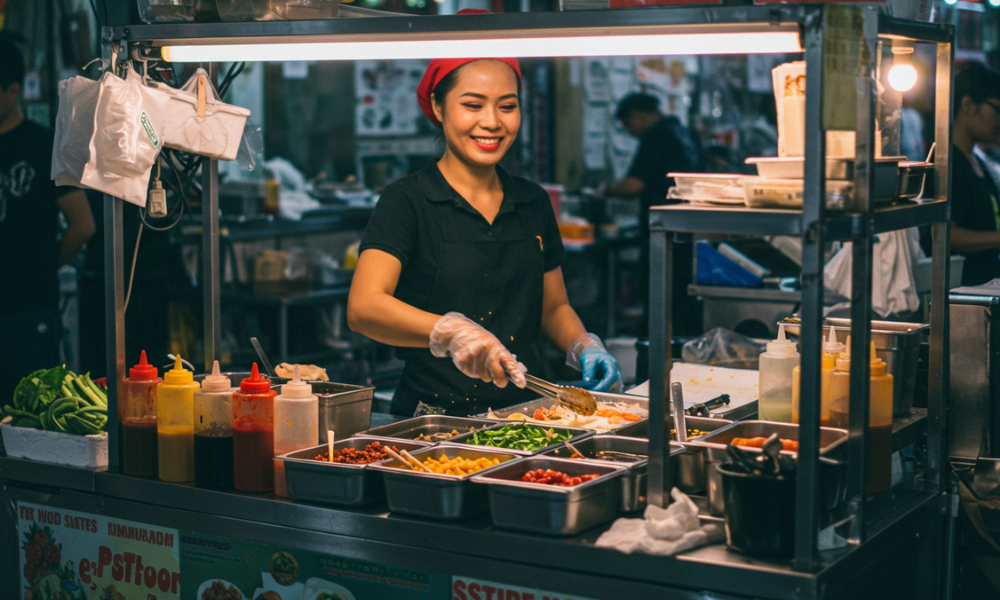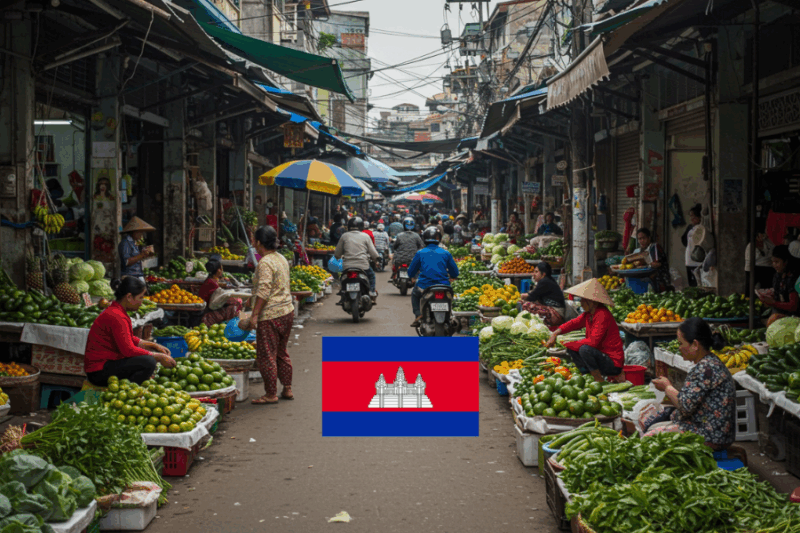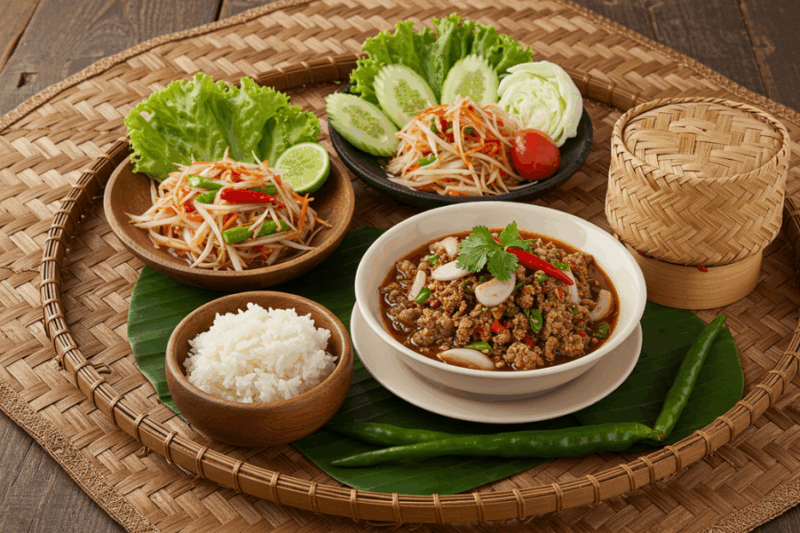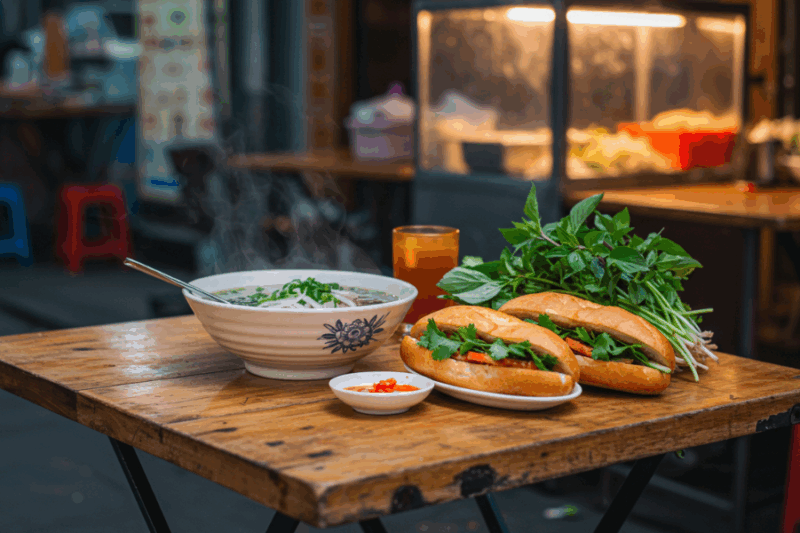Street food is a highlight of travel, offering authentic flavors, cultural immersion, and budget-friendly meals, from spicy som tam in Thailand to savory tacos in Mexico. For minimalist travelers, it’s a perfect way to eat well without the need for fancy restaurants or extra gear—just a reusable container and an adventurous palate. However, concerns about hygiene can make travelers hesitant. With the right strategies, you can enjoy clean and safe street food while keeping your journey light and worry-free. Here’s a guide to finding safe street food, with practical tips to ensure delicious, healthy experiences on the road.

Why Street Food Matters for Minimalist Travelers
Street food is affordable (often $1–3 per meal), widely available, and deeply tied to local culture, making it ideal for travelers who prioritize experiences over possessions. It requires minimal planning—no reservations or heavy guidebooks—and aligns with a carry-on-only approach by keeping your dining simple. By choosing safe vendors, you can savor local dishes like khao soi in Chiang Mai or banh mi in Hanoi without health risks, saving money and enhancing your trip.
1. Look for Busy Stalls with High Turnover
The best indicator of safe street food is a high turnover of ingredients, ensuring freshness. Busy stalls with long lines of locals, like those at Bangkok’s Yaowarat Chinatown, signal quality and trust. On my trip to Kuala Lumpur, I chose a Jalan Alor stall packed with locals eating nasi lemak ($1–2), and the food was fresh and delicious. Avoid quiet stalls where food sits out longer, increasing the risk of contamination. How to Do It: Visit during peak hours (6–8 PM for dinner, 7–9 AM for breakfast) when crowds are largest. Watch for vendors cooking on the spot. Why It Works: High demand means ingredients don’t linger, reducing spoilage risks.
2. Check for Cleanliness and Hygiene Practices
Cleanliness is critical for safe street food. Look for vendors who maintain tidy stalls and follow basic hygiene. In Siem Reap’s Psar Chas Market, I noticed vendors wearing gloves while preparing fish amok ($2–3), a good sign of care. Check if utensils are clean, food is covered to keep out flies, and raw ingredients are stored properly (e.g., meat on ice). Avoid stalls with dirty surfaces or overflowing trash. How to Do It: Observe the vendor’s setup—clean cutting boards, separate raw/cooked food areas, and handwashing stations (even a water jug).
Why It Works: Clean practices reduce the risk of cross-contamination and foodborne illness.
3. Choose Freshly Cooked or Grilled Foods
Hot, freshly cooked food is safer than pre-made dishes sitting at room temperature. In Mexico City, I opted for tacos al pastor grilled to order ($1 each) over pre-made salads, which can harbor bacteria in warm climates. Look for vendors cooking over flames or woks, like sai oua (sausages) in Chiang Mai or satay in Penang. Steaming-hot soups like pho in Hanoi are also safe bets, as heat kills germs. How to Do It: Watch for sizzling grills or bubbling pots. Ask for food “made fresh” if possible (learn phrases like “nóng” for “hot” in Vietnamese). Why It Works: High cooking temperatures eliminate pathogens, ensuring safer meals.
4. Avoid Risky Ingredients
Certain foods, like raw seafood, unpeeled fruits, or undercooked meats, carry higher risks. In Da Nang, I skipped raw herb garnishes unless washed, opting for cooked dishes like banh xeo ($1–2). Stick to peeled fruits (bananas, oranges) or cooked vegetables. Be cautious with ice in drinks, especially in areas with questionable water quality—request “no ice” (e.g., “mai nam khaeng” in Thai). Bottled or boiled drinks are safer. How to Do It: Choose cooked dishes over raw. Carry a reusable water bottle and ask for boiled tea or coffee if unsure about water.
Why It Works: Reduces exposure to bacteria like E. coli or parasites in untreated water or raw foods.
5. Trust Local Recommendations
Locals know the best and safest vendors. In Phnom Penh, I asked my hostel owner for tips and found a bustling stall serving kuy teav ($1.50), a safe and tasty noodle soup. Use X or travel forums like Reddit’s r/travel to find vendor recommendations, or chat with hostel staff or market regulars. Apps like TripAdvisor or Google Maps often list popular stalls with reviews mentioning hygiene. How to Do It: Ask locals, “Where do you eat street food?” or search X for posts like “best street food in [city].” Cross-check with review apps.
Why It Works: Locals frequent reliable vendors, ensuring quality and safety.
6. Observe Food Handling and Storage
Safe vendors handle food with care. In Bali, I chose a warung where the cook used tongs for nasi goreng ($1–2) and kept rice covered. Look for vendors who avoid touching food with bare hands, use clean utensils, and store ingredients properly (e.g., meat refrigerated or on ice). Avoid stalls where food is exposed to dust or insects, common in open-air markets. How to Do It: Watch how vendors prepare and store food. Ensure raw and cooked items are separated to avoid cross-contamination.
Why It Works: Proper handling minimizes bacterial growth and contamination.
7. Start Small to Test Your Stomach
If you’re new to a country’s cuisine, ease in with small portions to gauge how your body reacts. In Delhi, I started with a small serving of chaat ($0.50) from a busy stall before trying heavier dishes. This approach helps avoid digestive issues, especially in tropical climates where spices or oils differ from home. Stick to one new dish per meal initially. How to Do It: Order half-portions or share with a friend. Avoid mixing multiple unfamiliar foods in one sitting.
Why It Works: Gradual exposure reduces the risk of upset stomachs.
Minimalist Travel Tips
- Pack Light: Carry a reusable container (e.g., Stasher, $10) for leftovers and a water bottle ($15) to avoid buying drinks ($1–2/day).
- Budget Wisely: Street food costs $1–3/meal, saving $5–15/day compared to restaurants. A day’s meals can total $5–10.
- Stay Prepared: Pack hand sanitizer ($3) and a cloth napkin ($5) for hygiene. A small first-aid kit with anti-diarrheal meds ($5) is a precaution.
- Learn Phrases: Know local terms for “fresh,” “hot,” or “no ice” (e.g., “sinar” in Indonesian for fresh). Use Google Translate offline.
- Time Your Visits: Hit markets during peak hours for freshest food (6–8 PM or early morning).
- Cultural Respect: Smile and thank vendors (e.g., “khob khun” in Thai) to build rapport and learn about their food.
Why Safe Street Food Enhances Minimalist Travel
Street food aligns with minimalist travel by offering affordable, authentic meals that don’t require reservations or heavy gear. By choosing safe vendors, you avoid health setbacks, keeping your journey light and stress-free. On my last trip to Hanoi, I saved $10/day eating pho and banh mi from trusted stalls, spending $5–7 daily instead of $15–20 at tourist spots. These strategies ensure you enjoy local flavors while staying healthy and budget-conscious.



